Making Solar Panels From Moon Dirt - Jeff Bezos' Blue Alchemist
Patreon - https://www.patreon.com/user?u=37594401
Buy Me A Coffee? - https://www.buymeacoffee.com/whats.next
Donate With Cash App - https://cash.app/$YTpayments
Get Mentioned In Future Videos By Joining PATREON For As Little As $5 A Month
(and gain access to DOZENS of videos!)
Support Direct Improvements To The Channel With BUY ME A COFFEE
Or Make Direct Contributions With No Strings Attached With CASH APP
WANT MORE GREAT CONTENT?
SUBSCRIBE 2 THESE GREAT CHANNELS!
Vega Astro - https://www.youtube.com/channel/UCejLQCRfKR1XAmDeRRv3ifA
Terran Space Academy - https://www.youtube.com/channel/UCGzgxO2YKjk9yYKLwBjyeVA
Mars Matters - https://www.youtube.com/channel/UCPFLOxf5-AgE0QlaXhzol_Q
Patreon Theme by Used But Retro & E-Space Productions and used with permission
Jeff Bezos' spaceflight company Blue Origin revealed on February 10, 2023, in their blog that since 2021 they have been developing an in-situ resource utilization (ISRU) technology called "Blue Alchemist" a solar cell and electricity transmission wire prototype by using a material "chemically and mineralogically equivalent" to lunar regolith.
"We can make power systems on the moon directly from materials that exist everywhere on the surface, without special substances brought from Earth," the company says. "We have pioneered the technology and demonstrated all the steps. Our approach, Blue Alchemist, can scale indefinitely, eliminating power as a constraint anywhere on the moon."
Solar cells are usually made from a few key components: silicon, metal, and glass. These materials are found on the surface of the moon, which is referred to as the lunar regolith or moon dirt.
Blue Origin uses a process known as molten regolith electrolysis (MRE) to extract iron, silicon, and aluminum, with a byproduct of oxygen, which would be vital for any humans living and working on the moon, as well as a protective glass cover that would enable the cells to survive for 10 years or longer on the lunar surface.
For decades, MRE has been the subject of research. During the Apollo program, astronauts brought back small amounts of moon rocks to Earth; those samples have been used to make "fake" moon dirt here on Earth.
The company says that when an electric current is applied to the simulated regolith, it "moves and separates molten material at temperatures above 1600 degrees Celsius in a controlled and power-efficient manner while withstanding the high-temperature, corrosive environment."
Through this process, silicone is purified to more than 99.999%, a purity required for efficient solar cells.
"While typical silicon purification methods on Earth use large amounts of toxic and explosive chemicals, our process uses just sunlight and the silicon from our reactor."
"Our technology manufactures solar cells with zero carbon emissions, no water, and no toxic ingredients or other chemicals, it has exciting potential to directly benefit the Earth," Blue Origin says.
Blue Origin added, "Although our vision is technically ambitious, our technology is real now," and their goal of "producing solar power using only lunar resources is aligned with NASA's highest priority Moon-to-Mars infrastructure development objective."
"Once demonstrated and implemented on the Moon, Blue Alchemist will put unlimited solar power wherever we need it."
Blue Origin unveils "Blue Alchemist" a technology that turns Moon dust into solar cells
Luna Ring is a speculative engineering project which consists of a series of solar generators, disposed around the equator of the Moon, that could send the generated electric energy back to the Earth via microwaves from the near side of the Moon.[1] The project was proposed by Japanese construction firm Shimizu Corporation, after the 2011 Tōhoku earthquake and tsunami destroyed the Fukushima Daiichi Nuclear Power Plant, creating public opposition against nuclear electric energy. Until then, Japan had relied heavily on nuclear power.
The construction of a concrete ring on the Moon's equator to support the solar panels would be performed by robots that would be teleguided from Earth. Then, the solar panels would be placed on the concrete layer, and connected to microwave and laser transmitting stations.[3] The energy sent to Earth that way could be captured by receiving stations all through the day. The fact that the ring would surround the entire moon would mean that at least half of it would always be lit by the sun, resulting in constant electric production.[4]
In 2013, Shimizu Corporation stated that the construction of the Luna Ring could start as early as 2035.[2] However, the practical drawbacks of putting such a technically vast and complex project into place could hamper its construction, even if it could pave the way for simpler projects in clean energy production
-
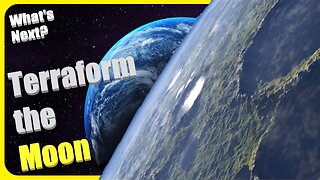 6:03
6:03
WhatsNextVids
1 year agoLet's Turn the MOON Into Another EARTH
329 -
 1:02
1:02
oversea2022
7 months agoMan Made Chem Cirrus Milky Sky 01/11/2023 ITALY Solar geoengineering by using SAI
3.71K1 -
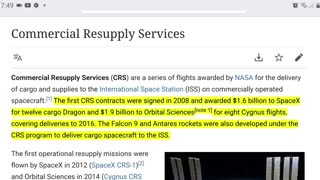 5:33
5:33
OP Freedom
1 year agoElon Musk | SpaceX | Space Force | NASA | Jeff Bezos | Blue Origin - They're all same company!
3.59K12 -
 46:10
46:10
Knowledge Land
1 year agoBest & Worst Planets For Human Colonization In Our Solar System - Full Documentary
324 -
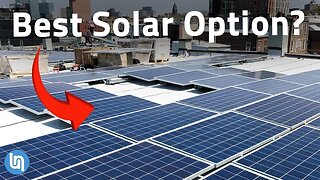 15:43
15:43
Undecided with Matt Ferrell Channel Archive
1 year agoCheap Solar Power For Everyone!
44 -
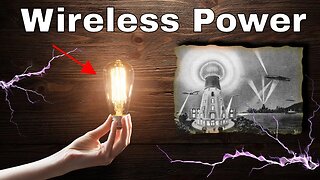 12:48
12:48
The Action Lab Archive Channel
1 year agoMaking Wireless Energy For The Entire Planet-Nikola Tesla's Wardenclyffe Tower
1311 -
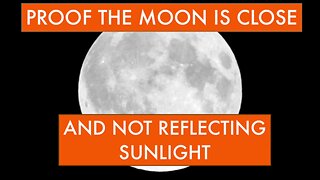 9:32
9:32
GodsFlatEarth
1 year agoProof The Moon Is Close & Not Reflecting Sunlight
2.03K32 -
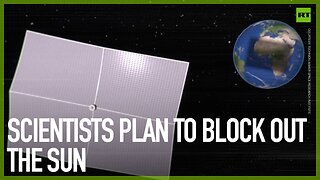 1:31
1:31
RT
3 months agoScientists plan to block out the Sun
9.64K118 -
 1:12:44
1:12:44
Sarah Westall
1 year agoReverse Engineering Alien Technology, NASA/JPL Origins, Project Blue Beam w/ Phil Catalino
13K24 -
 5:23
5:23
Judopaul
1 year agoGenerate Solar Power in the Dark
14